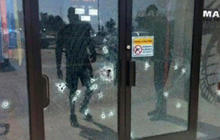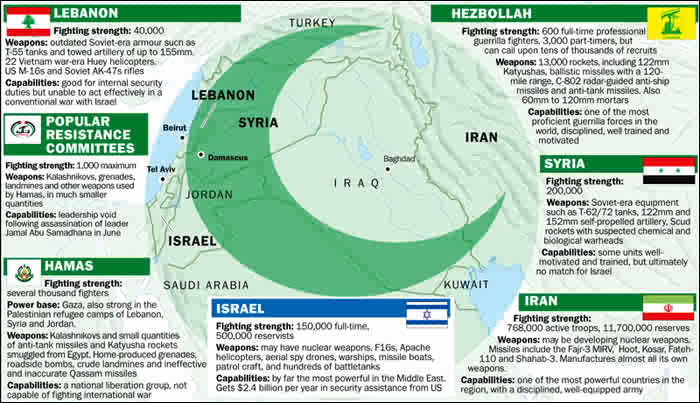Update: Born in Kuwait, naturalized citizen. Was living in Hixson, TN at the time of the murders. His vehicle had a large cache of small arms.
The killer had a blog with just a few entries on the 13th and all religiously inspired. Read it here.

The shooter’s father apparently worked for the City of Chattanooga as an unarmed security officer in the Stormwater Management Division and wrote a letter to President to GW Bush and that link is here. The shooter graduated from UT Chattanooga and worked from April 2009 to April 2010 as an intern with the Tennessee Valley Authority. He also had internships at Mohawk Industries and Global Trade Express. Details are here. The father owns the home valued at $206,000 where is there an investigation ongoing at that location and two women were removed from the residence.

Muhammad Youssef Abdulzeez from Arizona where public records show Abdulzeez is approximately 24 years old and a native of Phoenix. Abdulzeez has no prior criminal record, except a 2013 traffic violation.
Rest in Peace
Here’s the new Pentagon statement on the killing of four Marines in Chattanooga:
“”We can confirm that four DoD servicemembers were tragically killed and one wounded in two separate shootings in Chattanooga, Tennessee today. The shootings took place at a Network Operations Support Center operated by the U.S. Navy and at an armed forces recruiting center. Names of the deceased will be released following next of kin notification. We are working with local and federal authorities. We will provide additional information as it becomes available.”
The killer was from Phoenix and immediately the FBI and law enforcement in Chattanooga called this an act of domestic terror.
For additional photos of the shooter who is alleged to have had contact with the Garland, Texas shooters, click here.
CHATTANOOGA, Tenn. — A gunman unleashed a barrage of gunfire at two military facilities Thursday in Tennessee, killing at least four Marines and wounding a soldier and a police officer, officials told CBS News. The suspect also was killed.
Chattanooga Mayor Andy Berke said five people died in all, including the gunman. Two law enforcement sources told CBS News that the shooting suspect was identified as Muhammad Youssef Abdulazeez.

Chattanooga shooting
Five people are dead, including the gunman, and three injured in two shootings at military facilities in Chattanooga, Tennessee
U.S. Attorney Bill Killian said officials were treating the attacks as an “act of domestic terrorism,” though FBI Special Agent in Charge Ed Reinhold said authorities were still investigating a motive.

It is unclear if the Tweet and the photo above are of the shooter.
Officials told CBS News correspondent David Marin that four U.S. Marines were among the dead and another was injured. The U.S. Marines released a statement saying that the injured Marine was a recruiter who treated and released after sustaining a wound to the leg.
A police officer also was shot in the ankle and is expected to be ok.
“Lives have been lost from some faithful people who have been serving our country, and I think I join all Tennesseans in being both sickened and saddened by this,” Gov. Bill Haslam said.
A facility 7 miles away on Old Lee Highway also was attacked. Brian Lepley, a spokesman with the U.S. Army Recruiting Command in Fort Knox, Kentucky, said his recruiters there were told by law enforcement that the shooter was in a car, stopped in front of the facility, shot at the building and drove off.
The Army recruiters at the facility told Lepley they were not hurt and had evacuated; Lepley said he had no information about recruiters for the other branches at the facility.

Sgt. 1st Class Robert Dodge, 36, is the center leader for U.S. Army recruiting at the facility on Old Lee Highway. He said four Army personnel were in the office at the time. He said the Air Force, Navy, Marine Corps and National Guard all have their own offices right next to each other. Around 10:30 or 10:45 a.m., Dodge and the others heard a gunshot, “which kind of sparked our attention,” he said.
“Shortly after that, just a few seconds, the shooter began shooting more rounds. We realized it was an actual shooting,” he said. They then got on the ground and barricaded themselves in a safe place. Dodge estimated there were 30 to 50 shots fired.
He did not see the shooter or a vehicle.
The Army recruiting office was not damaged, but doors and glass were damaged at the neighboring Air Force, Navy and Marine offices.
Reinhold said all the dead were killed at the Navy Operational Support Center and Marine Corps Reserve Center Chattanooga. It sits between Amnicola Highway and a pathway that runs through Tennessee RiverPark, a popular park at a bend in the Tennessee River northeast of downtown Chattanooga. It’s in a light industrial area that includes a Coca-Cola bottling plant and Binswanger Glass.
The two entrances to the fenced facility have unmanned gates and concrete barriers that require approaching cars to slow down to drive around them.
Marilyn Hutcheson, who works at Binswanger Glass just across the street, said she heard a barrage of gunfire 11 a.m.
“I couldn’t even begin to tell you how many,” she said. “It was rapid fire, like pow pow pow pow pow, so quickly. The next thing I knew, there were police cars coming from every direction.”
She ran inside, where she remained locked down with other employees and a customer. The gunfire continued with occasional bursts she estimated for 20 minutes.
“We’re apprehensive,” Hutcheson said. “Not knowing what transpired, if it was a grievance or terroristic related, we just don’t know.”

They’ve seen dozens of emergency vehicles rush by: bomb teams, SWAT teams, and state, local and federal authorities.
The Armed Forces Career Center on Lee Highway sits in a short strip between a Cricket Wireless and an Italian restaurant with no apparent additional security.
Near the other shooting location on Lee Highway, Nicholas Donohue heard a blast of gunshots while working at Desktop Solutions. But he had music playing and wasn’t quite sure what the noise had been. He turned off the music and seconds later, a second blast thundered. He took shelter in a back room.
“Even though it knew it was most likely gunfire I heard, you also don’t want to believe it’s happening in the moment,” he said. “Since I didn’t see anything, I couldn’t be sure.”
By the time he emerged, police were cordoning off the area.





